This book describes an interesting selection of crimes that were committed on, around, and against the railway in Victorian Britain.
Published in January 2023 by Pen and Sword and written by Malcolm Clegg, this hardback book measures around 23.5 cm x 23.9 cm, and has 160 pages and 20 illustrations. It has a published price of £20 although Pen and Sword currently has it on offer at £8.99, and at the time of writing, it can be obtained from Amazon for £16.16.
Railway Crimes Committed In Victorian Britain describes crimes that range from the serious down to the almost trivial, including some that show the social issues of the time.
Some incidents are described in great detail with several pages of writing, but many of the least serious are covered in just a few lines.
The book is logically divided into eight chapters with Chapter 1 titled Targeting the Royal Mail, followed by Stealing from the Railway, Murder and Violence, Railway Fraud, Pickpocketing, Obstructing the Railway, Crimes Resulting In Accidents, and Other Offences.
Tales of fraud against the railway cover more than simple fare evasion, and there are several examples of pickpocketing.
Other crimes include a deliberate derailment that nearly killed Charles Dickens, whilst some incidents were probably an accident but the defendants still stood trial.
The contents of the final chapter “Other Offences” are not really crimes, but seem to be incidents that the author has included to pad out the number of pages, such as a pub landlord who annoyed passengers, a guard losing his train, and a runaway horse on a railway line.
There is even a story of railway companies being prosecuted for their locomotives emitting smoke.
In Victorian times railways were almost exclusively used for transporting mail and valuable goods, so the author has chosen his opening chapters to tell stories of the theft of mailbags, coal, and even boxes of gold and silver bullion, as well as the first great train robbery in 1855.
The top photo below shows silver ingots similar to ones stolen from wooden cases whilst being delivered to their customer during their journey from St. Pancras station in London.
The bottom photo shows a sight that was common until the 1960s, with coal being delivered in open wagons, thus a great temptation for thieves whenever a coal train stopped.
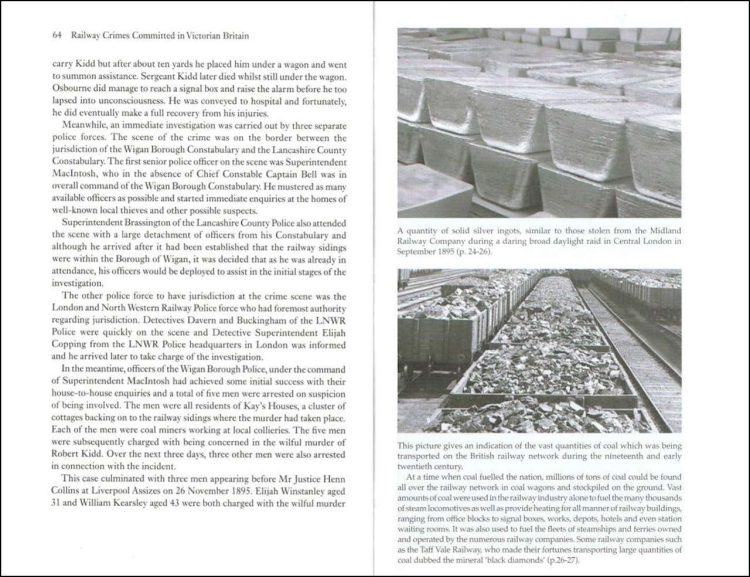
The top left photo shows a typical warehouse owned by the Great Northern Railway.
In Victorian Britain there were no electronic security alarms, leading to many examples of theft from such buildings.
The bottom left photo accompanies the story of the ingenuity used by thieves during the first robbery from a train.
Theft of goods from the railway sometimes led to murder as happened to Detective Sergeant Robert Kidd in 1895 shown at the top right below, who is commemorated with the plaque at Wigan North Western station seen at the bottom right.
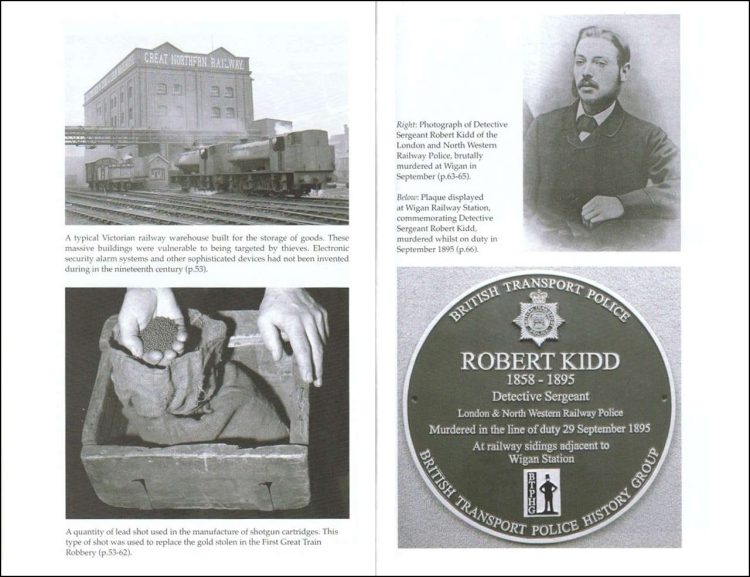
Another story describes the investigation into a governess who killed the child in her care and was hanged for her crime as seen at the top left below. She was convicted on the evidence of baby clothes found at Brighton railway station. Paddington station at the bottom left is illustrated because it was where a mutilated body was found in a box.
The photo at the top right accompanies the description of someone being robbed during a railway journey. In contrast, the photo at the bottom right shows an army officer who molested a lady during a railway journey.
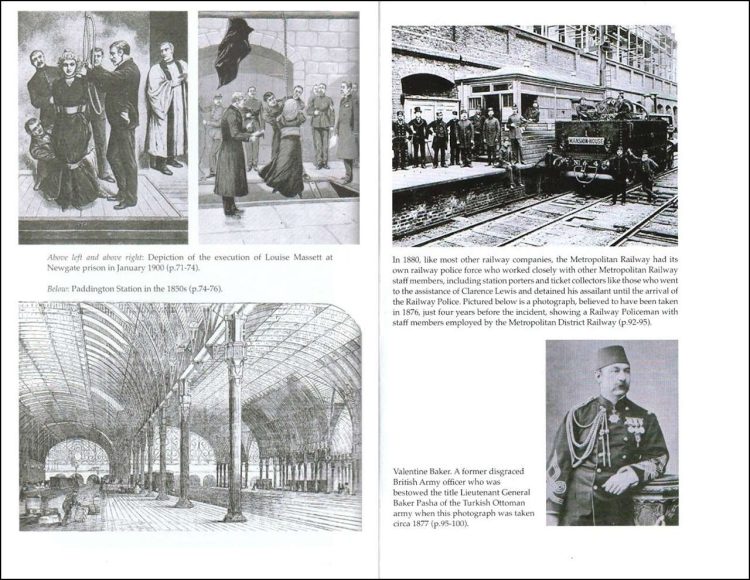
The top left photo below shows George Hudson, the so-called ‘Railway King’ who once owned over 1,000 miles of railway track, but was later found to have committed many acts of fraud. Pickpocketing was so rife on Victorian trains that railway companies resorted to adorning their carriages with large notices warning passengers of the danger, as seen by the illustration at the bottom left.
Unscrupulous individuals even resorted to removing lengths of railway tracks to derail a train so they could steal whatever they could from the derailed wagons. The right-hand photograph shows a locomotive similar to one that was derailed near Cardiff in 1847.
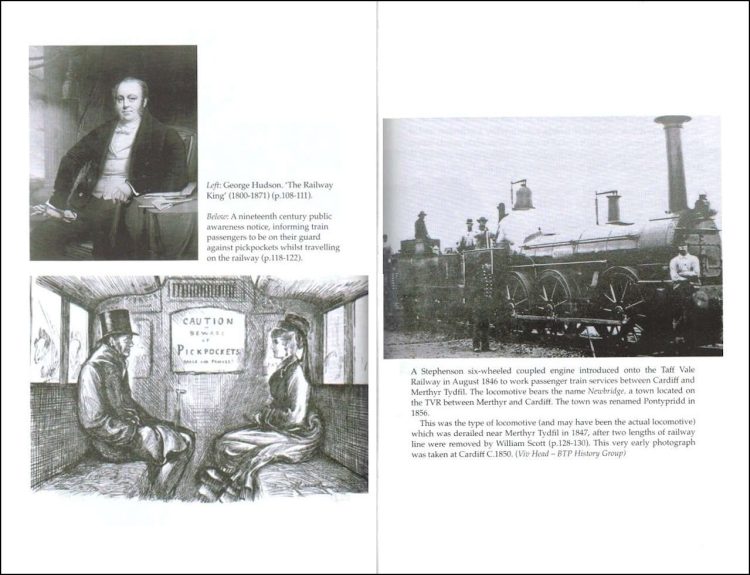
The illustration below shows a train derailed on a viaduct as a result of poor track maintenance, which resulted in the foreman of the track gang responsible for its maintenance standing trial for manslaughter even though it wasn’t his fault. Coincidentally, the author Charles Dickens was a passenger on the train but escaped unscathed.
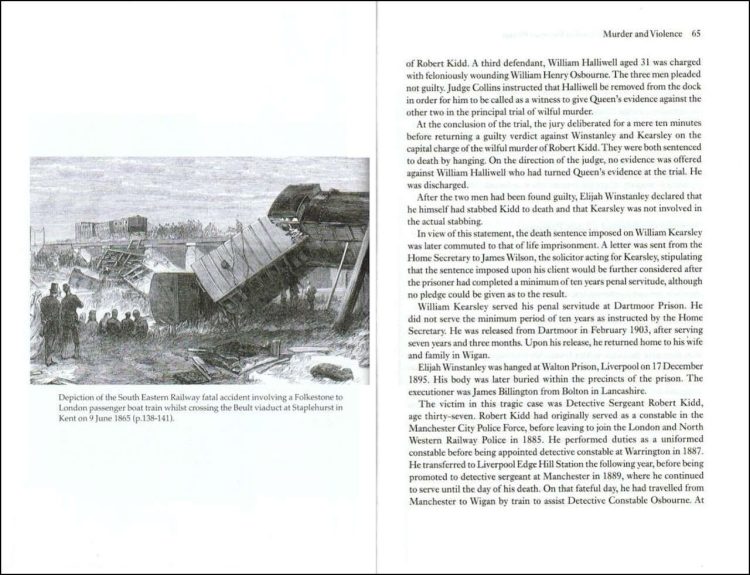
The book is not only a valuable source of historical information, but also a captivating read for anyone interested in crime, railways, or the Victorian era.
Whilst some stories are covered in depth, some are just statements of fact detailing who perpetrated the crime, the nature of the crime, and their sentence.
The book is available to purchase from Pen and Sword and from Amazon.
We would like to thank Pen and Sword for providing us with a copy of the book for review.





Responses